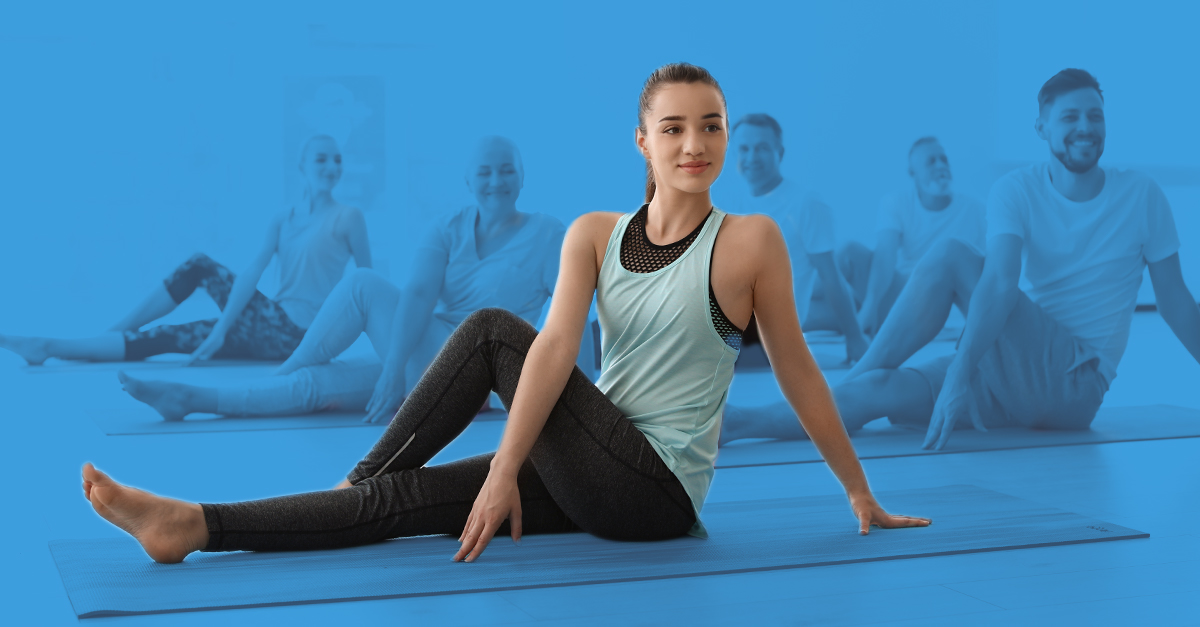
Do Yoga!
For me, there’s almost nothing better than walking out of the gym feeling as if my muscles have just gone through a long, intense battle with the iron (and won). This feeling of muscle exhaustion is the result of thousands of microtears within the muscle group that’s been targeted in the recently completed workout; and microtears are a good thing! With proper nutrition and adequate rest, those muscles containing the microtears will heal back stronger than before, which is the repeated steps necessary for new muscle growth.
However, as those microtears heal and create new muscle tissue, knots and muscle tightness can (and will) occur; which, over time, can lead to negative muscle stress or even injury. This is not so good.
As I get older and older I’m not only beginning to see the positive sides to crossword puzzles, but I’m also finding that muscle aches, pains, creaks, and overall fatigue is becoming more and more frequent. At the same time, I’m slowly realizing that post-workout muscle care is paramount to a long, strong, active life.
Aside from staying strong and injury free, practicing regular stretching and/or yoga brings heaps of additional benefits. According to Hopkins Medicine, yoga helps with back-pain relief as well as helps to ease symptoms of arthritis. This is down to the multiple light motions that involve flexion and extension of the spine involved in yoga routines that lead to both increased back flexibility and strength.
When it comes to improving overall heart health, yoga has been shown to trigger the opposite response to stress (‘fight-or-flight’), known as the ‘rest-and-digest’ response. Thus, reducing one’s chances of developing heart disease, stroke, or any other cardiovascular problems that are usually associated with those with higher, daily-life stress levels.
In numerous studies, Harvard Health found that those performing yoga regularly displayed a reduction in LDL cholesterol and levels of blood pressure. Better overall mood, an increased sex drive, and an improved overall level of fitness were also strongly tied to those who practiced regular yoga (at least twice a week).
Of course, trying something new can seem a little daunting. But, a great way to start a new hobby or practice is to first understand that hobby or practice a little more!
Below, you’ll find a very brief explanation of the most familiar and common types of yoga:
Restorative Yoga – A practice of slower, more rehabilitative yoga in which poses are often held for longer durations (as long as 20 minutes!), with the aid of props such as pillows, blocks, or straps. Restorative yoga focuses more on relaxing with less emphasis on flexibility and the poses themselves.
Yin Yoga – A slower, more flexibility-focused practice of yoga which encourages the feeling of release and ‘letting go’ with poses held anywhere between 1 and 10 minutes. Yin yoga is ideal for those who work out regularly and are in need of releasing built-up tension from overworked muscles and joints.
Hatha Yoga – Often described as ‘the gentle yoga’, Hatha focuses on static poses instead of a yoga flow. Breathing techniques, slow holds, and finding balance build up the Hatha routines that usually run between 45 and 90 minutes. Great for beginners!
Vinyasa Flow – A slightly faster-paced form of yoga in which classes are led through a sequence from one pose to the next. Less emphasis is placed on the specific poses, with more focus placed on the breathing and overall transition between poses. Vinyasa flow routines also double up as a pretty good workout!
Ashtanga Yoga – A more vigorous practice of yoga in which a series of poses are held for 5 breaths to allow a constant pace through each routine. Classes often last longer than the other forms of yoga, and is often referred to as one of the tougher practices of yoga.
If you’re looking to start incorporating yoga into your day-to-day life, physical classes can be found in almost every major city in the world. A simple, local Google search should point you into the right direction (be sure to always check out the ratings and reviews!). Alternatively, there are countless, excellent, free beginner, intermediate, and advanced yoga routines online. A great place to start is YouTube; this allows one to mimic the movements of a (hopefully) qualified instructor in real time.
Some of the channels that I personally use can be found below:
Namaste.
https://www.youtube.com/user/SarahBethShow
https://www.youtube.com/user/yogawithadriene
https://www.youtube.com/user/KinoYoga
